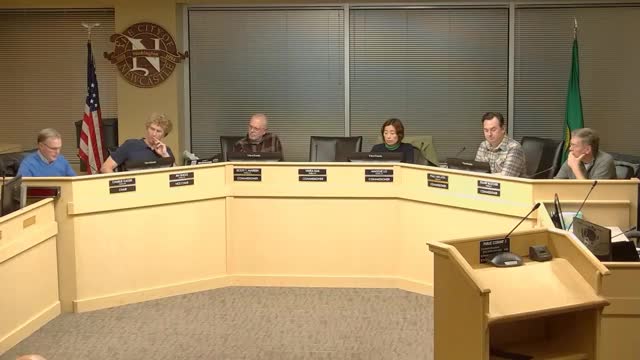Newcastle commissioners clash over street connectivity amid resident safety concerns
December 19, 2024 | City Council Meetings, Newcastle, King County, Washington
This article was created by AI summarizing key points discussed. AI makes mistakes, so for full details and context, please refer to the video of the full meeting. Please report any errors so we can fix them. Report an error »

The City of Newcastle's Planning Commission convened on December 18, 2024, to discuss critical updates to local street connectivity policies, focusing on balancing emergency response needs with community concerns about traffic safety and neighborhood integrity.
The meeting began with a proposal to eliminate Policy 41, which was deemed unnecessary, while retaining Policy 42 with minor adjustments. This policy emphasizes the importance of linking streets to enhance emergency response times. The discussion highlighted the need for a careful approach to street connectivity, particularly in established neighborhoods where residents expressed concerns about increased traffic and safety risks for children.
Commissioners debated the implications of striking certain language from Policy 43, which would remove the presumption favoring street connections. The revised approach aims to encourage street connections only when they improve emergency response times and address local residents' concerns. Commissioner Blocker acknowledged the efforts of Chair Gantt in refining the language but raised concerns that the proposed changes might not provide sufficient assurance to existing residents about their ability to influence decisions affecting their neighborhoods.
Commissioner Marsh shared a personal perspective, emphasizing the complexities of property rights and the potential for litigation if new developments infringe upon established residents' expectations. He cautioned against overly simplistic solutions that could lead to unintended consequences for the city.
The conversation also touched on the emotional impact of street connectivity on families, with Commissioner Quigg recounting heartfelt testimonies from residents worried about their children's safety. He underscored the need to balance health and safety concerns with the desire for community spaces where children can play freely.
As the discussion progressed, various commissioners expressed differing views on the proposed compromise language. Some supported it as a reasonable middle ground, while others felt it did not adequately reflect the community's strong opposition to connecting streets. The consensus was that any policy must prioritize local residents' input and safety while considering the broader implications for emergency services.
In conclusion, the Planning Commission's meeting underscored the ongoing challenge of reconciling community desires with urban planning needs. The next steps involve further refining the proposed policies to ensure they align with residents' concerns while maintaining effective emergency response capabilities. The commission plans to continue engaging with the community to address these complex issues in future meetings.
The meeting began with a proposal to eliminate Policy 41, which was deemed unnecessary, while retaining Policy 42 with minor adjustments. This policy emphasizes the importance of linking streets to enhance emergency response times. The discussion highlighted the need for a careful approach to street connectivity, particularly in established neighborhoods where residents expressed concerns about increased traffic and safety risks for children.
Commissioners debated the implications of striking certain language from Policy 43, which would remove the presumption favoring street connections. The revised approach aims to encourage street connections only when they improve emergency response times and address local residents' concerns. Commissioner Blocker acknowledged the efforts of Chair Gantt in refining the language but raised concerns that the proposed changes might not provide sufficient assurance to existing residents about their ability to influence decisions affecting their neighborhoods.
Commissioner Marsh shared a personal perspective, emphasizing the complexities of property rights and the potential for litigation if new developments infringe upon established residents' expectations. He cautioned against overly simplistic solutions that could lead to unintended consequences for the city.
The conversation also touched on the emotional impact of street connectivity on families, with Commissioner Quigg recounting heartfelt testimonies from residents worried about their children's safety. He underscored the need to balance health and safety concerns with the desire for community spaces where children can play freely.
As the discussion progressed, various commissioners expressed differing views on the proposed compromise language. Some supported it as a reasonable middle ground, while others felt it did not adequately reflect the community's strong opposition to connecting streets. The consensus was that any policy must prioritize local residents' input and safety while considering the broader implications for emergency services.
In conclusion, the Planning Commission's meeting underscored the ongoing challenge of reconciling community desires with urban planning needs. The next steps involve further refining the proposed policies to ensure they align with residents' concerns while maintaining effective emergency response capabilities. The commission plans to continue engaging with the community to address these complex issues in future meetings.
View full meeting
This article is based on a recent meeting—watch the full video and explore the complete transcript for deeper insights into the discussion.
View full meeting
